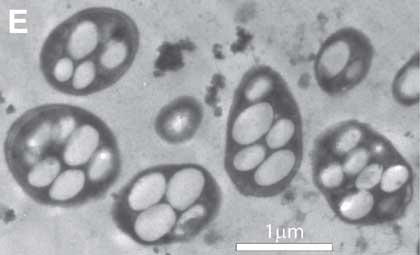Tolerant to arsenic but no more
2012/07/11 Etxebeste Aduriz, Egoitz - Elhuyar Zientzia Iturria: Elhuyar aldizkaria
.jpg)
Two articles published in the journal Science deny the ability of California Monkey Lake bacteria to use arsenic.
In December 2010, a team of researchers from the NASA Institute of Astrobiology published that the bacterium GFAJ-1 of Lake Mono was able to replace phosphorus by arsenic in various biomolecules, such as DNA. The news provoked a great debate, both for the announced form and for the consequences of the discovery. In fact, he questioned the bases of the chemistry of life. Life is based on six elements: carbon, hydrogen, nitrogen, oxygen, sulfur and phosphorus. And although arsenic is quite similar to phosphorus, it is toxic to all living things known so far, except for this bacterium.
Many questioned the discovery and microbiologist of British Columbia University, Rosie Redfield, said earlier this year that she was unable to repeat NASA's results in a laboratory. Redfield is one of the authors of one of the articles published now. In this article, it is indicated that in the DNA of bacteria that have grown in a medium with very few phosphors and arsenic, in the same conditions as those of NASA, no arsenic has been detected. And in the second article, researchers from the Swiss Federal Institute of Technology have published that they do not grow without phosphorus, even if they are arsenic.
Thus, the researchers conclude that GFAJ-1 is resistant to arsenic, but does not use it instead of phosphorus, and that, although it is capable of growing with very few fossils, phosphorus is essential. In any case, Felisa Wolfe-Simon, author of the original article, told Nature that "the original article suggested the need for a phosphorus, as observed in these two articles, but our data indicated that the use of a very small amount of arsenic in cells and biomolecules allowed survival in a very poor phosphorus environment. These amounts of arsenic can be very difficult to measure once the cells are opened.”
Gai honi buruzko eduki gehiago
Elhuyarrek garatutako teknologia




